I am trying to draw a map for UAE emirates using geojson.
The geojson is valid and validated on geojson.io, the result appeared instead of a map a rectangle , the written code is here:
var width = 20,
height = 20;
var scal = (1 << 10) / 2 / Math.PI;
//Define map projection
var projection = d3.geo.mercator();
projection
.scale(scal)///3.5
.translate([width/2, height/2]);
//Define path generator
var path = d3.geo.path().projection(projection);
d3.json("http://localhost/data/uae-em.json", function(error,json) {
if(error) alert("error fetching data");
var svg = d3.select("article")
.append("svg")
.attr("width",width)
.attr("height",height);
//draw map
var map = svg.selectAll("path")
.data(json.features)
.enter()
.append("path")
.attr("d", path)
.style("fill", "#3498db");
});
The JSON data is here: https://files.fm/f/ndsz3v85
And here is an example feature from the geojson:
{"type":"Feature","id":"4","properties":{"name":"UmmAlQwain"},"geometry":{"type":"Polygon","coordinates":[[[55.2350748,25.5700834],[55.4229709,25.3989174],[55.4236655,25.3981583],[55.423986,25.3978339],[55.4254059,25.3960785],[55.4272991,25.3935724],[55.4570596,25.3762406],[55.4577152,25.375909],[55.4915399,25.3593419],[55.4926741,25.3588472],[55.4954455,25.35793],[55.5013237,25.3571279],[55.5031779,25.3570031],[55.5390972,25.3630675],[55.5909015,25.3679027],[55.5918297,25.3680754],[55.5927443,25.3683591],[55.5935906,25.3688154],[55.5943278,25.3693581],[55.5952833,25.3702339],[55.6010034,25.3768825],[55.6044809,25.3808245],[55.6295136,25.4095735],[55.630044,25.4101151],[55.6303207,25.4106671],[55.6302516,25.411542],[55.6299137,25.4123589],[55.6293946,25.413368],[55.6287288,25.4144586],[55.6280518,25.4152536],[55.6211794,25.4201663],[55.6196221,25.4209307],[55.6177489,25.4214301],[55.605742,25.4232035],[55.6024463,25.4237462],[55.5975759,25.4244245],[55.5956543,25.4249531],[55.5919637,25.4262723],[55.554199,25.4399865],[55.5518752,25.4408552],[55.5505241,25.4414505],[55.5490758,25.4421533],[55.5473004,25.4425344],[55.5456819,25.4430884],[55.5370397,25.4462406],[55.5358338,25.4466226],[55.5349558,25.4467468],[55.5337817,25.4467659],[55.523193,25.4459922],[55.5198927,25.4460304],[55.5162327,25.4457248],[55.513895,25.4454286],[55.4882538,25.4420186],[55.4870268,25.4419613],[55.4857574,25.4421332],[55.4843188,25.4426681],[55.4771469,25.4472339],[55.4709611,25.4516781],[55.324428,25.6230138],[55.3205286,25.6184125],[55.3117729,25.6106044],[55.3015804,25.5994214],[55.2892555,25.5829995],[55.2795994,25.5665793],[55.2730684,25.5680481],[55.2385191,25.570346],[55.2350748,25.5700834]]]}}




